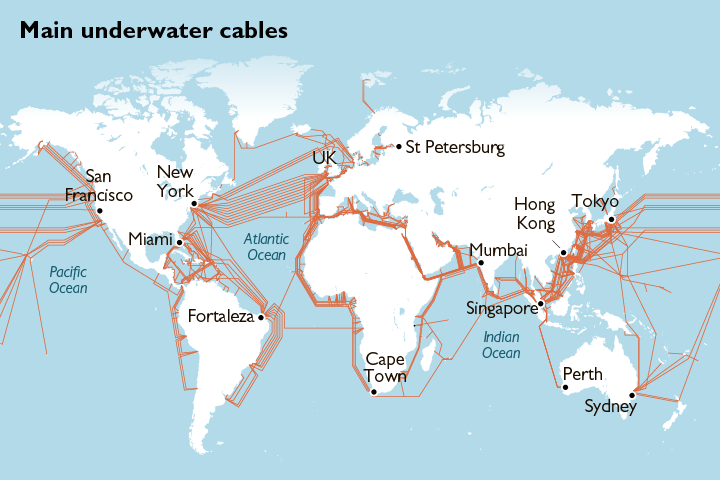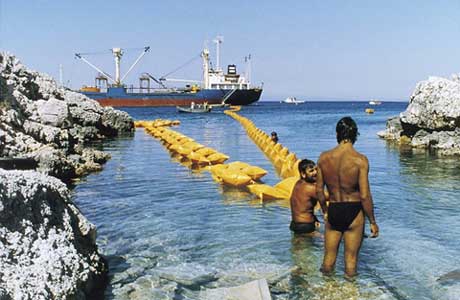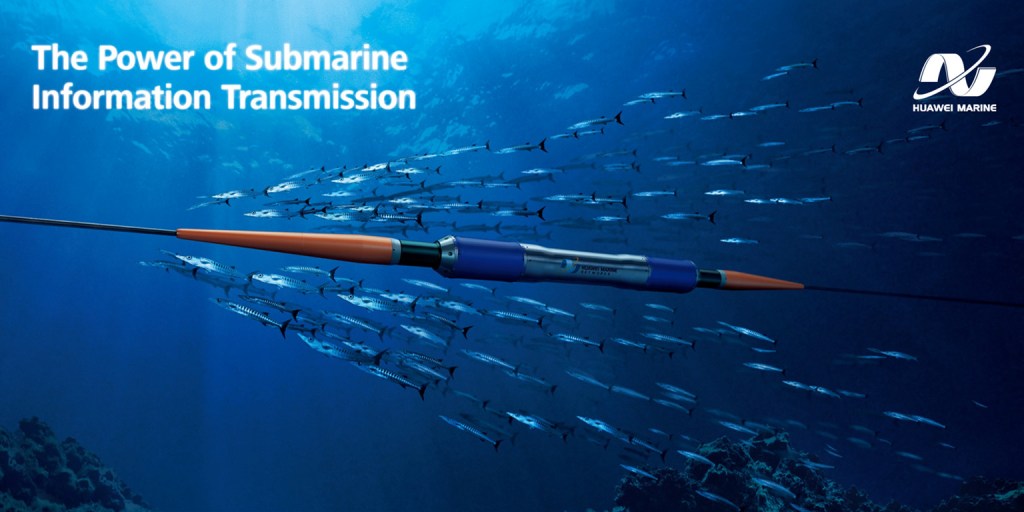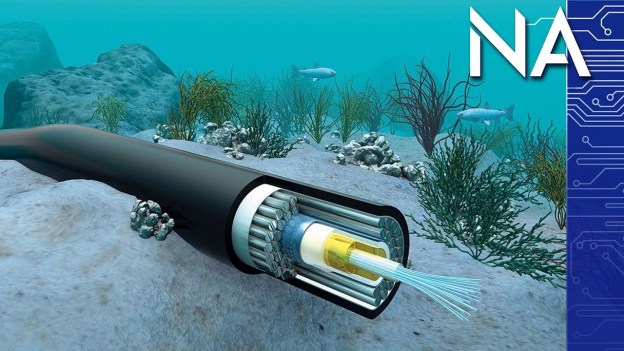A new front has opened in the battle between the U.S. and China over control of global networks that deliver the internet. This one is beneath the ocean. While the U.S. wages a high-profile campaign to exclude China’s Huawei Technologies Co. from next-generation mobile networks over fears of espionage, the company is embedding itself into undersea cable networks that ferry nearly all of the world’s internet data.
About 380 active submarine cables—bundles of fiber-optic lines that travel oceans on the seabed—carry about 95% of intercontinental voice and data traffic, making them critical for the economies and national security of most countries.

The Huawei Marine’s Undersea Cable Network majority owned by Huawei Technologies, has worked on some 90 projects to build or upgrade submarine cables around the world…US o fficials say the company’s knowledge of and access to undersea cables could allow China to attach devices that divert or monitor data traffic—or, in a conflict, to sever links to entire nations. Such interference could be done remotely, via Huawei network management software and other equipment at coastal landing stations, where submarine cables join land-based networks, these officials say.
Huawei Marine said in an email that no customer, industry player or government has directly raised security concerns about its products and operations.Joe Kelly, a Huawei spokesman, said the company is privately owned and has never been asked by any government to do anything that would jeopardize its customers or business. “If asked to do so,” he said, “we would refuse.”
The U.S. has sought to block Huawei from its own telecom infrastructure, including undersea cables, since at least 2012. American concerns about subsea links have since deepened—and spread to allies—as China moves to erode U.S. dominance of the world’s internet infrastructure…..Undersea cables are owned mainly by telecom operators and, in recent years, by such content providers as Facebook and Google. Smaller players rent bandwidth.Most users can’t control which cable systems carry their data between continents. A handful of switches typically route traffic along the path considered best, based on available capacity and agreements between cable operators.
In June 2017, Nick Warner, then head of Australia’s Secret Intelligence Service, traveled to the Solomon Islands, a strategically located South Pacific archipelago. His mission, according to people familiar with the visit, was to block a 2016 deal with Huawei Marine to build a 2,500-mile cable connecting Sydney to the Solomons. Mr. Warner told the Solomons’ prime minister the deal would give China a connection to Australia’s internet grid through a Sydney landing point, creating a cyber risk, these people said. Australia later announced it would finance the cable link and steered the contract to an Australian company. In another recent clash, the U.S., Australia and Japan tried unsuccessfully in September 2018 to quash an undersea-cable deal between Huawei Marine and Papua New Guinea.
U.S. and allied officials point to China’s record of cyber intrusions, growing Communist Party influence inside Chinese firms and a recent Chinese law requiring companies to assist intelligence operations. Landing stations are more exposed in poorer countries where cyber defenses tend to be weakest, U.S. and allied officials said. And network management systems are generally operated using computer servers at risk of cyber intrusion. Undersea cables are vulnerable, officials said, because large segments lie in international waters, where physical tampering can go undetected. At least one U.S. submarine can hack into seabed cables, defense experts said. In 2013, former National Security Agency contractor Edward Snowden alleged that Britain and the U.S. monitored submarine cable data. The U.S. and its allies now fear such tactics could be used against them. American and British military commanders warned recently that Russian submarines were operating near undersea cables. In 2018, the U.S. sanctioned a Russian company for supplying Russian spies with diving equipment to help tap seabed cables.

The Ionian Sea Submarine Cable Project (Greece)
China seeks to build a Digital Silk Road, including undersea cables, terrestrial and satellite links, as part of its Belt and Road plan to finance a new global infrastructure network. Chinese government strategy papers on the Digital Silk Road cite the importance of undersea cables, as well as Huawei’s role in them. A research institute attached to China’s Ministry of Industry and Information Technology, in a paper published in September, praised Huawei’s technical prowess in undersea cable transmission and said China was poised to become “one of the world’s most important international submarine cable communication centers within a decade or two.” China’s foreign and technology ministries didn’t respond to requests for comment…

Bjarni Thorvardarson, then chief executive of the cable’s Ireland-based operator, said U.S. authorities raised no objections until 2012, when a congressional report declared Huawei Technologies a national security threat. Mr. Thorvardarson wasn’t convinced. “It was camouflaged as a security risk, but it was mostly about a preference for using U.S. technology,” he said. Under pressure, Mr. Thorvardarson dropped Huawei Marine from Project Express in 2013. The older cable network continued to use Huawei equipment.
The company is now the fourth-biggest player in an industry long dominated by U.S.-based SubCom and Finnish-owned Alcatel Submarine Networks. Japan’s NEC Corp is in third place.Huawei Marine is expected to complete 28 cables between 2015 and 2020—nearly a quarter of all those built globally—and it has upgraded many more, according to TeleGeography, a research company.
Excerpts from America’s Undersea Battle With China for Control of the Global Internet Grid , WSJ, Mar. 12, 2019
